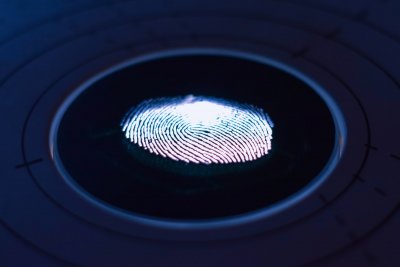Fingerprinting Services
Lansing Police Department provides fingerprinting services on the following days and times:
- Tuesdays from 8:00 am until noon; and
- Thursdays from 8:00 am until noon.
No appointment is required. Walk-ins are first come, first serve.
The cost is $15.00.
If you are being fingerprinted for employment, please be sure and read the instructions sent to you and follow all instructions.
Interesting Facts about Fingerprints
1. No Two Fingerprints Are Alike
For over a century, fingerprints have been the foundation of identification. This is especially true when it comes to keeping track of criminals within a society. People leave their fingerprints everywhere thanks to the oils that are on their hands. These fingerprints can be dusted, recorded, digitally analyzed, and compared to all other fingerprints that have ever been stored. With the millions and millions of fingerprint records that have been analyzed, no two duplicate fingerprint patterns have ever been recorded.
2. It’s a Crime Catcher
If someone is issued an identification card, a sample of their DNA is not taken. That would actually be considered a violation of someone’s privacy in many jurisdictions. What people are willing to do, however, is record their fingerprints so they can get an ID or have a background check completed on them so they can get a job. Because there are literally thousands of fingerprints that are added to the global registries every day, the fingerprint is widely considered the most effective crime catcher of any identification method.
3. An Industry First
Forensic sciences actually got started because of fingerprints. We think of forensics today as the place to have DNA analyzed, but fingerprints are still an important part of this science. The first forensics programs even had methods that would take away the certification of people who could keep up with scientific standards. In the early days, fingerprints were dusted and then taped. Today a fingerprint can be scanned digitally with a smartphone.
4. It’s a Gripper
Why do we even have fingerprints in the first place? It’s actually a way for our fingers and hand to be able to grab onto things. The small ridges of the skin help to keep objects from sliding away when they are grabbed. Fingerprints will extend down a person’s fingers and even encompass an entire palm on some people, giving them a full hand of natural “sticky tack” for a good grip. Some scientists even believe that fingerprints aid in our sense of touch.
5. They Develop Early In Life
A fetus will begin developing its own unique set of fingerprints by the 3 month gestation mark. It is believed that the environment of the womb has a direct influence on the development of fingerprints. This is because identical twins may look the same to the finest detail, but their fingerprints are actually going to be different from each other. That’s right – because of fingerprints, identical twins aren’t 100% identical.
6. Some Materials Don’t Accept Fingerprints
The reason why people leave fingerprints on everything is because the skin of the fingers will secrete oils and salts that leave a residue. Because fingerprints are oil based, therefore, not every material is going to retain the information as well as a mirror or a wall. Textiles especially are absorbent in nature and the materials will take the moisture away because it is porous in nature. Soap or cheese can retain fingerprints that molded prints can obtain, however, so keep that in mind if you’re sneaking into someone’s bathroom or refrigerator in the middle of the night.
7. Blame It on the Koala
The koala has ridges on their fingers that are able to create a fingerprint that looks almost identical to the fingerprints that humans leave. It’s been said that a koala could commit a crime and that it could be blamed on a human [or vice versa], but there is one structural fact about a koala’s hand that is often overlooked. Koalas have two thumbs on each hand, which would mean a koala would leave four different thumb prints if they broke into a house.
8. Matching Points Don’t Match
One of the legal standards that has been put in place around the world is the concept of matching points. Because fingerprints can look very similar to each other, places like the UK and Australia have instituted a minimum of 12-16 matching points that a fingerprint must meet when compared to a file image for it to be considered legal evidence. In the United States, there isn’t any set standards for matching points. Most fingerprint experts agree that there is no scientific need for a minimum number of matching points for a confirmed match to be made.
9. To Catch a Murderer
In the United States, the first legal conviction based on fingerprint evidence occurred in 1910. A man broke into a house and shot the home owner during the robbery. On the way out, he left his fingerprints in some wet paint on a bannister. The US Court of Appeals upheld the conviction, calling the fingerprint comparison scientifically accurate. The first conviction in the UK was much less dramatic. It happened in 1902 and helped to catch a man who had stolen some billiard balls. The first fingerprint case in the world, however, happened in 1892 in Argentina.
10. Life on the Mississippi
Mark Twain actually has one of the first ever references to fingerprint technology being used with a book that he published in 1883. He used fingerprint evidence as the basis of a solution to solve a crime in Life on the Mississippi. Twain replicated this idea a year later with his next book as well.
(Source: https://healthresearchfunding.org/10-interesting-facts-fingerprints/)

